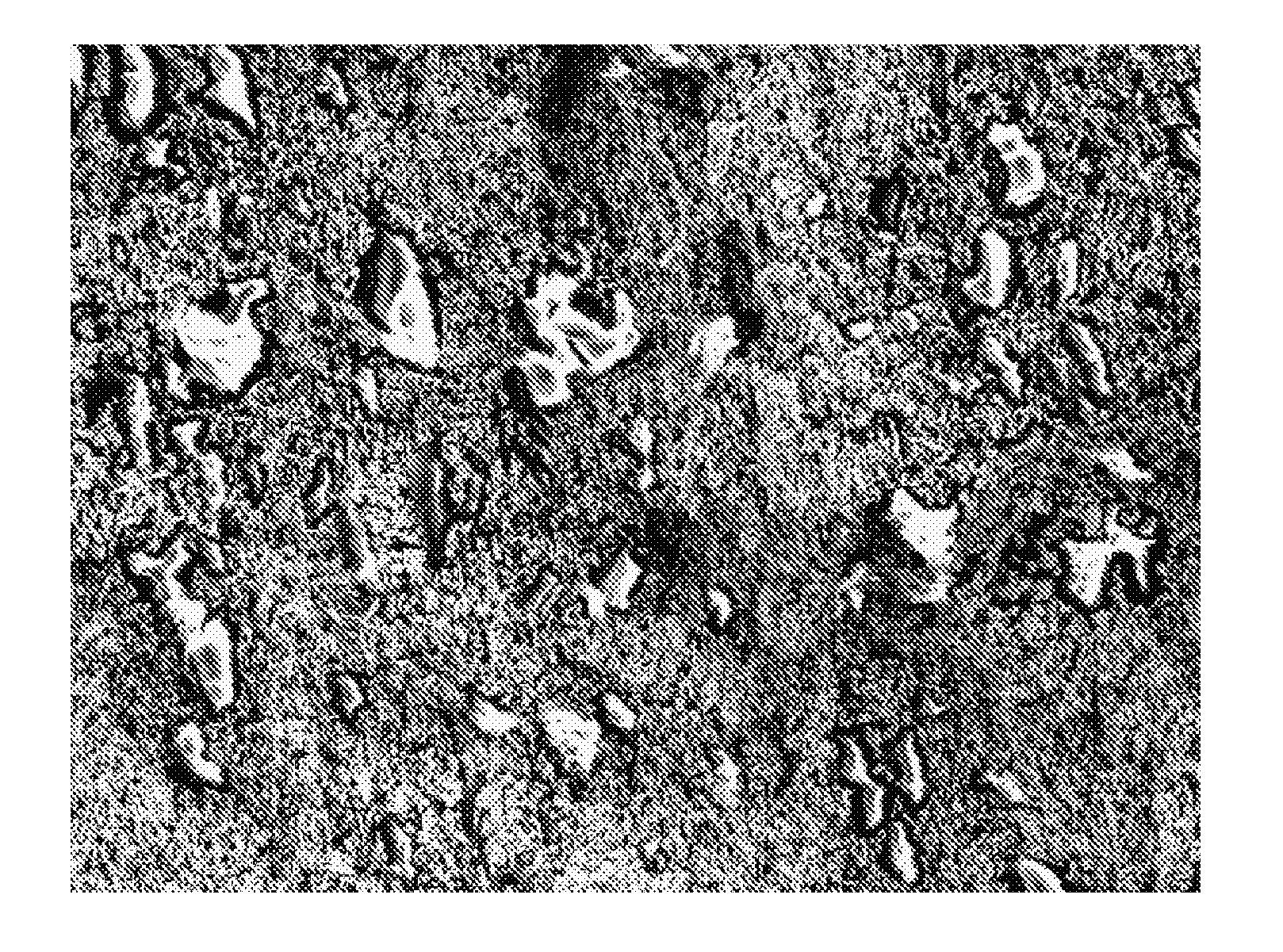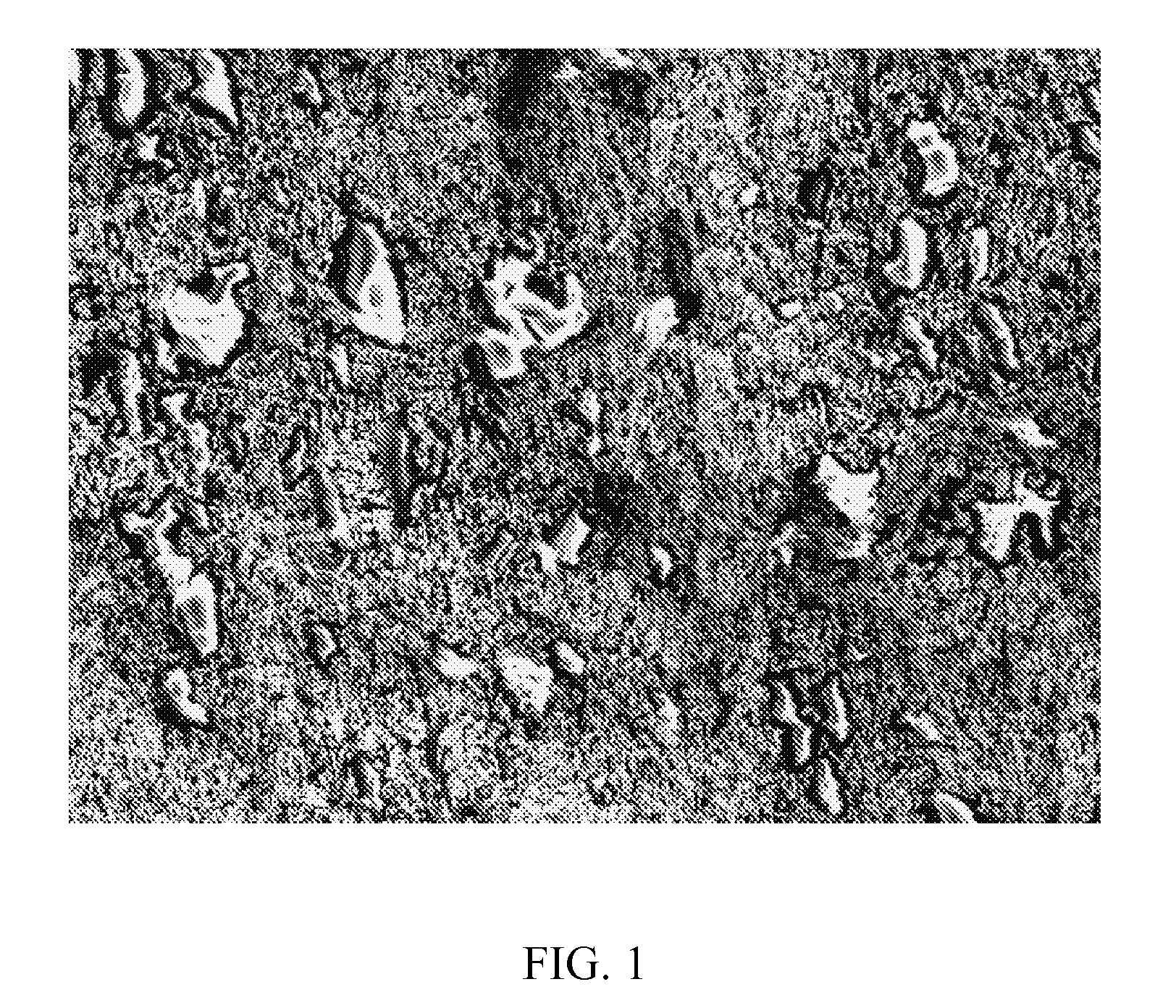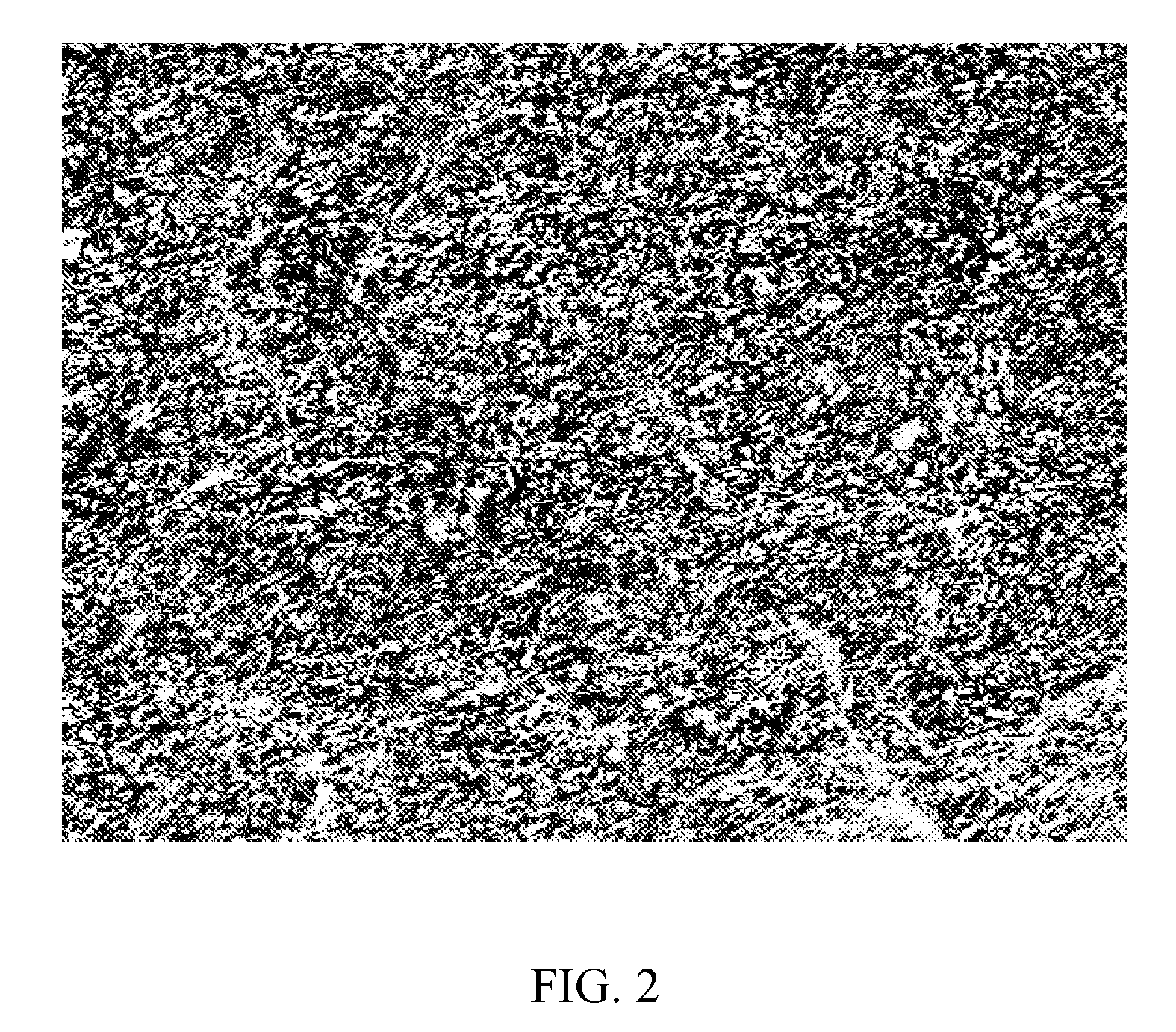Method for producing heterogeneous composites
a composite material and polymer technology, applied in the direction of non-metal conductors, instruments, conductors, etc., can solve the problems of limiting factors, undesirable sacrifices, and the need for fillers, and achieve enhanced properties, reduced bulk filler concentration, and high thermal and/or electrical conductivity.
- Summary
- Abstract
- Description
- Claims
- Application Information
AI Technical Summary
Benefits of technology
Problems solved by technology
Method used
Image
Examples
example 1
[0052]Silver flake coated with stearic acid was first added to a reactive organic resin, namely diglycidal either of bisphenol F (DGEBF), in a 100 gram Hauschild® mixing cup and thoroughly mixed for a minimum of two cycles at 2200 rpm for 1 minute / cycle. A second reactive organic compound, i.e. a curing agent, was then added and mixed for a minimum of two cycles at 2200 rpm for 1 minute / cycle. The resulting material was cast between 19 mm thick, Teflon coated aluminum plates separated with 1 mm glass slides. Samples were cured with a convection oven using a programmed ramp which consisted of heating the sample from room temperature to 160° C. over the course of 40 minutes followed by an isothermal hold for 1 hour.
[0053]Bulk thermal conductivity was measured via the Flash Method (ASTM E1461). Test specimens were cut from the cured samples. Samples were 12.7 mm in diameter and ˜1 mm in thickness. All samples were spray-coated with a thin film of graphite to ensure complete absorption ...
example 2
[0061]The samples corresponding to data shown in Table 2 and FIGS. 4-6 were prepared according the description provided in Example 1 with the exceptions of select electrical volume conductivity measurements. The resistance (or conductance) of each sample dictated the choice of resistivity instrumentation. Samples having resistances in excess of ˜1010 ohms were measured via ASTM D-257 using a HP 4339B High Resistance Meter equipped with a 16008B resistance cell. Samples were in the form of circular disks ˜1 mm in thickness and >60 mm in diameter. Samples having resistances in the range of ˜102-1010 ohms were measured using a Keithley 610C Electrometer. Samples in this case were in the form of well-defined strips. Uncured samples were cured into strips 1 mm in thickness, ˜40 mm in length, and ˜2 mm in width. Copper wire was placed at the ends of the sample prior to curing. The ends of the wire were lightly sanded prior to insertion. The samples were cured using the same heating profil...
example 3
[0067]DGEBF (resin), PAA (curative), and stearic acid coated silver flake (filler) were mixed (uncured state) and characterized (cured state) as outlined in Example 1. The samples were cured by placing them in a preheated convection oven and curing them for 2 hours. Studies on as-received flake involved first pressing the powder in to 1-3 mm thick, 12.5 mm diameter pellet using a KBr hand press, set at a compressive force of approximately 0.5 Mg. The pellets were heat treated under the same conditions at which the composites were cured in the previous example.
[0068]Table 3 and FIG. 7 show how temperature dramatically affects the thermal conductivity of both the pure Ag flake and composites thereof. For both materials, the higher cure temperatures result in higher conductivities. Interestingly, both sets of data possess the same sigmoidal shape (see FIG. 7) with a small increase in conductivity observed below 120° C., followed by a steep temperature increase in the vicinity of 160° C...
PUM
| Property | Measurement | Unit |
|---|---|---|
| temperature | aaaaa | aaaaa |
| temperature | aaaaa | aaaaa |
| cure temperature | aaaaa | aaaaa |
Abstract
Description
Claims
Application Information
 Login to View More
Login to View More - R&D
- Intellectual Property
- Life Sciences
- Materials
- Tech Scout
- Unparalleled Data Quality
- Higher Quality Content
- 60% Fewer Hallucinations
Browse by: Latest US Patents, China's latest patents, Technical Efficacy Thesaurus, Application Domain, Technology Topic, Popular Technical Reports.
© 2025 PatSnap. All rights reserved.Legal|Privacy policy|Modern Slavery Act Transparency Statement|Sitemap|About US| Contact US: help@patsnap.com



